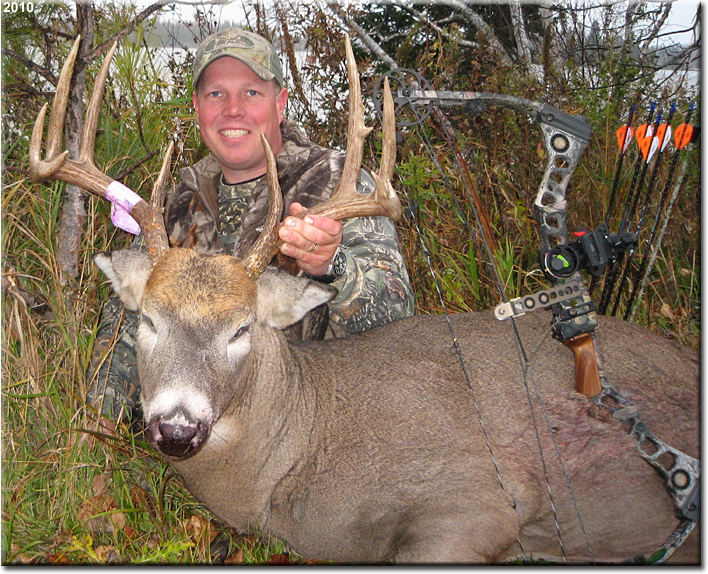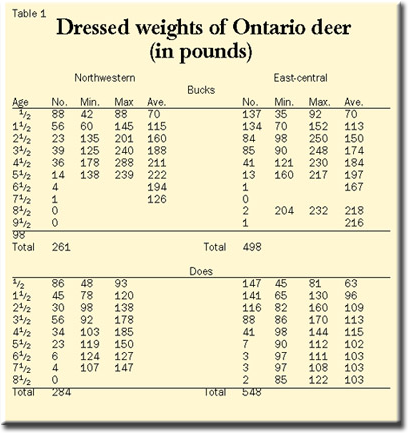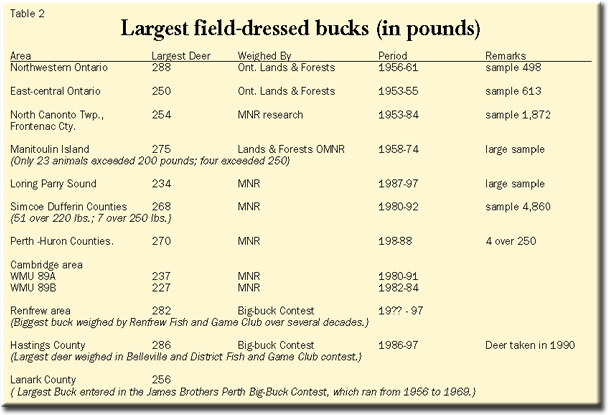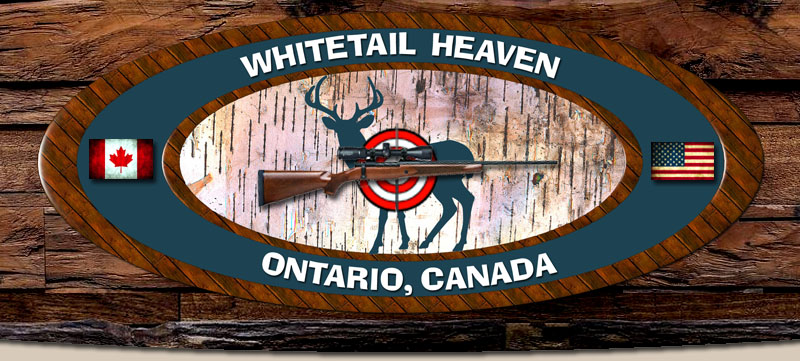How Big Are Ontario's Whitetail Deer

By: Blair Dawson
Ontario has some huge deer. Of the 30 subspecies of whitetails in North America, ours is the largest. Odocoileus virginianus, subspecies borealis (of the north), is found from Manitoba east to the Maritimes and in bordering U.S. states. Though other northern jurisdictions might have recorded larger individual deer, available data shows that average weights of Ontario deer, and particularly those from northwestern Ontario, might be the highest in North America.
Body size becomes progressively smaller to the south. Southern-Florida key deer, for instance, are not much bigger than a medium-sized dog. And, even though many Canadian-prairie and Texas deer sport huge antlers, body sizes are comparatively small.
Live or "round" weights are difficult to come by; most hunter-killed deer are eviscerated as quickly as possible to avoid spoilage. Full body weights are available mainly from research studies and occasionally from traffic kills.
Accurate weights of large samples of field-dressed deer were taken decades ago by Ontario game managers and researchers. Field-dressed (eviscerated) weights of northwestern Ontario and east-central Ontario deer are listed in Table 1.
Determining Deer Weight:
Large or small, a deer loses an average of 23 per cent of its body weight when field dressed, and about another 17- to 25 per cent when hide, head, and lower legs are removed. This butcher-ready weight is a higher percentage of whole body weight for larger animals. For instance, an 80-pound field-dressed fawn fully dresses (butcher ready) at 52 per cent; a 125-pound yearling at 57 per cent; and a field-dressed deer over 160 pounds at about 60 per cent. The relationship between field-dressed, hanging butcher-ready, and live weight is also shown on an accompanying graph. Record weights

For Ontario, solid information is scarce. Neither the Ministry of Natural Resources (MNR) nor the Ontario Federation of Anglers and Hunters make particular note of huge deer. The Foundation for the Recognition of Ontario Wildlife (FROW) has some figures in its record books, but many of the top weights have been estimated or are listed incorrectly as field dressed. Weight records from MNR check stations, certified butchers, and big-buck-contest scales might be the most accurate sources.
The largest hunter-taken buck we've tracked down, at 288 pounds dressed, and weighed by the MNR, was taken in the late 1950s by an unknown hunter in northwestern Ontario. Second place, at 286 pounds dressed, goes to a deer taken from Hastings County, and weighed in a big-buck contest. The third-largest buck, at 282 pounds, was taken by compound bow on October 28, 1997, near the town of Renfrew in the Ottawa valley. The archer, Mark Melcher of Renfrew, won the local big-buck contest that year. Record antlers
Boone and Crockett-sized antlers do not necessarily come from old, huge-bodied animals. The world-record typical whitetail scoring 213 5/8 points, taken by Milo Hansen in 1993 in Saskatchewan, is an example. It was young and weighed no more than 160 pounds dressed, according to whitetail experts who inspected the animal, which was not weighed. Ontario deer are larger than those on the Prairies, but they don't compete as far as antlers are concerned. This is not to say that big deer do not carry large antlers. There are at least seven high-scoring Ontario whitetails listed in FROW's Records of Ontario Big Game, with reported weights (dressed) between 250 and 270 pounds.
Deer weighing more than 300 pounds dressed might have been taken in Ontario. Proving it is another matter. We've heard rumours of giant bucks and have attempted to track them down, with little success. Close examination indicates most weights were either whole body weights or estimates. One story from several sources relates to a huge deer supposedly taken from the Dorchester Swamp near London, Ontario, perhaps 25 years ago, and weighed at the feed mill in Thamesford.
Many northern U.S. states also have had supposedly 300-pound-plus deer reported. One hunter reported a buck weighing 402 pounds from Minnesota. Actually seeing these deer weighed, though, would separate fact from fiction. Strangely, of tens of thousands of deer weighed by conservation-agency staff, only one from New Brunswick has exceeded 300 pounds dressed weight. A 250-pound dressed buck is bragging material anywhere. Check out Table 2 for Ontario figures.
Genetics, rather than fertile soil and abundance of agricultural foods, appear to produce the biggest deer. If MNR's provincial record of 288 pounds is exceeded, my guess is it will come from either the northwest or east-central districts. Since bucks lose up to 25 per cent of their weight during the November rut, early-season bow hunters seem to have the best opportunities to bag giants.


